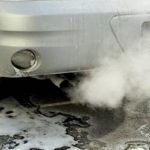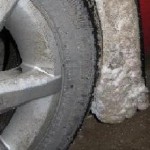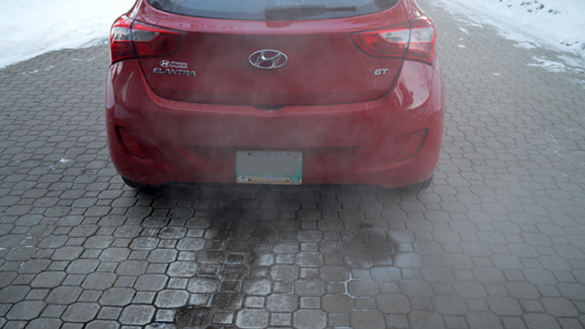Recent comments on our “Idling Wastes Fuel” myth busting blog raised a few issues or commonly held beliefs that in turn become reasons why people idle their cars to warm them up. Experts agree that the most efficient way to warm up your car is to drive it, but yet many people still unnecessarily idle for excessive periods of time. For some it is about getting into a warm car, but for most of us it just seems like the right thing to do when the car is cold. Here are a few tips and some good reasons for reconsidering how long you idle your car.
Let’s start with one of the most common concerns about driving your car before it is warm inside, not being able to see because the windows will fog up. There are several things that you can do to avoid this issue. When you leave your car parked, leave a window open just a few millimeters. This will allow any warm, moist air inside left inside your car to escape so that it does not contribute to fogging up your windows when you return to your car. When you do get into your car, open your windows a little bit. It may seem counter intuitive, but opening the window allows some of the moisture from your breath to escape and not condense on the windows. Finally, make sure that you clear away the snow from the air intake (in front of the windshield area).
 Are you concerned that you will cause excess engine wear engine if you drive it cold? The fact is you may be doing it more harm by idling. When the engine is cold, more fuel is pumped to the engine. When your engine is idling this extra fuel may not be fully combusted and the fuel residue can then build up on the cylinder walls. In addition, idling also does not warm up other moving parts of your car like the transmission, wheel bearings, and even your tires. If you idle to warm the engine and then drive away like normal, you can cause additional wear on these other components. Driving your car gently for the first few kilometers will warm up all the components safely and without extra wear and tear. In modern fuel injected engines, you need no more than 30 seconds of idling on cold winter days before driving away.
Are you concerned that you will cause excess engine wear engine if you drive it cold? The fact is you may be doing it more harm by idling. When the engine is cold, more fuel is pumped to the engine. When your engine is idling this extra fuel may not be fully combusted and the fuel residue can then build up on the cylinder walls. In addition, idling also does not warm up other moving parts of your car like the transmission, wheel bearings, and even your tires. If you idle to warm the engine and then drive away like normal, you can cause additional wear on these other components. Driving your car gently for the first few kilometers will warm up all the components safely and without extra wear and tear. In modern fuel injected engines, you need no more than 30 seconds of idling on cold winter days before driving away.
If you want to speed up the warming process even more, use your block heater. You only need to have this on for a few hours, not all night, so consider a timer or have the plug on a switch so that you can turn it on a few hours before you need your car. You can also consider installing a winter front cover on your car to reduce the amount of cold air reaching the radiator. Using a piece of cardboard in front of the radiator is not recommended as it stops all air from reaching the radiator and in warmer conditions can cause your vehicle to overheat.
So that is what you need to know about warming your car up efficiently. But have you considered those emissions that your car contributes when it is cold? The less efficient fuel combustion and the richer fuel mixture when your car is cold means a sharp increase in pollutants coming out the tailpipe. Until your vehicle’s catalytic converter reaches peak operating temperature (between 400°C and 800°C), it does little to help reduce those pollutants. Like the drive components of your car, the catalytic converter will warm up much quicker when your vehicle is driven thus reducing emissions as well.
Here are a few other tips for winter driving that can keep you safe and save you money.
- Take it easy, it’s safer! It also uses less fuel when you are not slipping and spinning on the snow and ice. Snow also creates additional drag placed against the motion of your vehicle. Spinning your wheels won’t get you there faster but it will increase the wear on your tires.
 Make sure to clear the snow off your car and clean out any snow and ice that builds up in your wheel wells. Once again it is safer since be able to see all around you is important when you drive, but also the extra weight will increase fuel consumption.
Make sure to clear the snow off your car and clean out any snow and ice that builds up in your wheel wells. Once again it is safer since be able to see all around you is important when you drive, but also the extra weight will increase fuel consumption.
- Don’t forget to check your tire pressure as well. In winter and especially during significant temperature swings, tire pressure can decrease significantly. Make sure as well that your valve stems have caps on them so that moisture does not freeze in the valve. A frozen valve can result in significant problem when you do go to add air to you tires.




Recent Comments